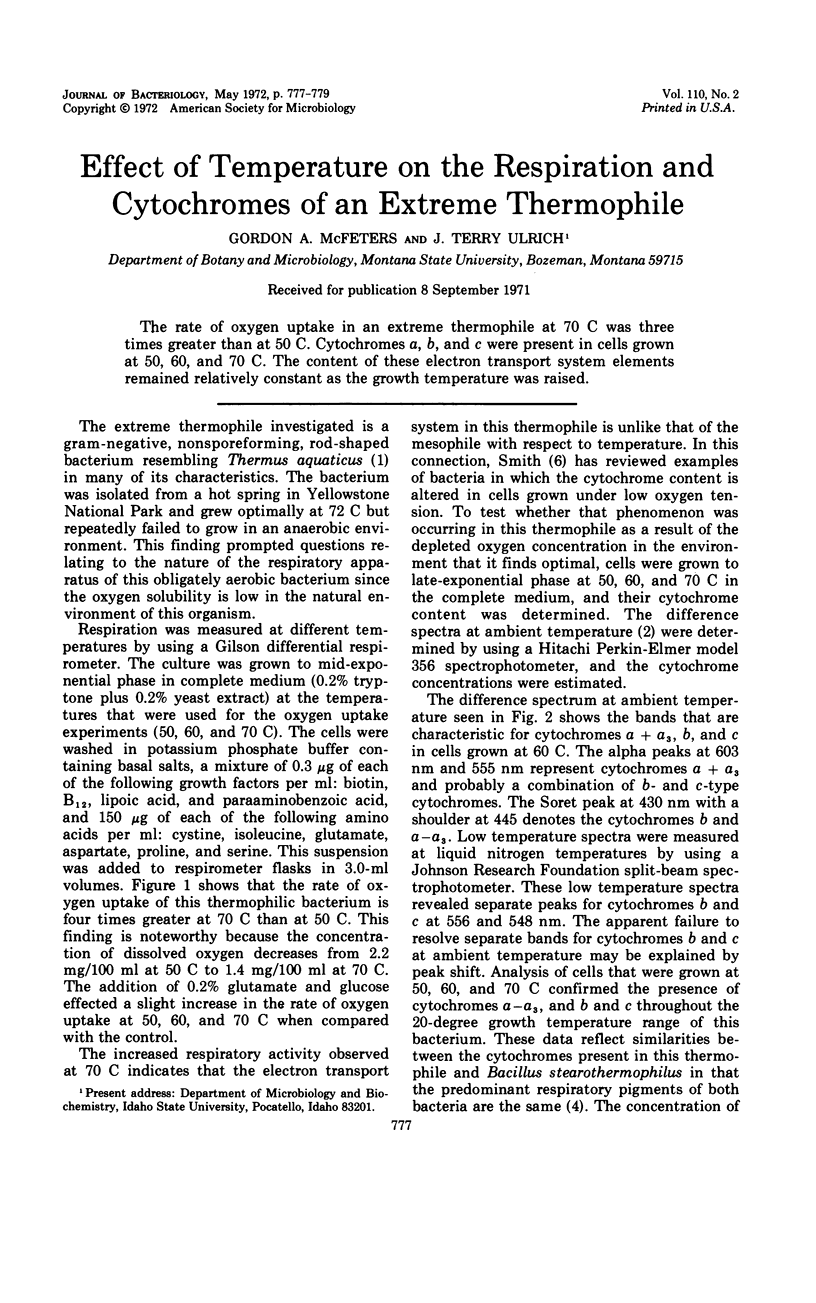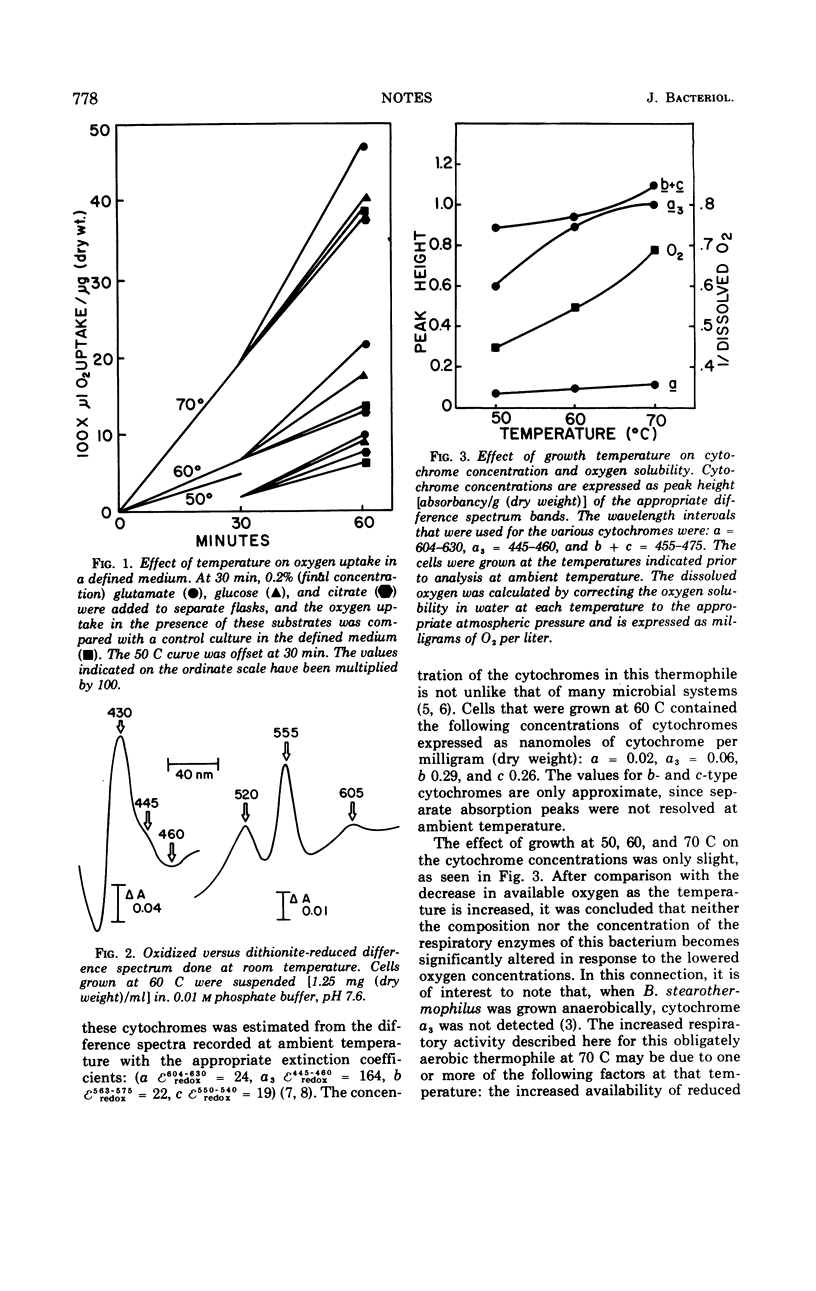Abstract
The rate of oxygen uptake in an extreme thermophile at 70 C was three times greater than at 50 C. Cytochromes a, b, and c were present in cells grown at 50, 60, and 70 C. The content of these electron transport system elements remained relatively constant as the growth temperature was raised.
Full text
PDF


Selected References
These references are in PubMed. This may not be the complete list of references from this article.
- Brock T. D., Freeze H. Thermus aquaticus gen. n. and sp. n., a nonsporulating extreme thermophile. J Bacteriol. 1969 Apr;98(1):289–297. doi: 10.1128/jb.98.1.289-297.1969. [DOI] [PMC free article] [PubMed] [Google Scholar]
- CHANCE B., WILLIAMS G. R. Respiratory enzymes in oxidative phosphorylation. II. Difference spectra. J Biol Chem. 1955 Nov;217(1):395–407. [PubMed] [Google Scholar]
- DOWNEY R. J., GEORGI C. E., MILITZER W. E. Electron transport particles from Bacillus stearothermophilus. J Bacteriol. 1962 May;83:1140–1146. doi: 10.1128/jb.83.5.1140-1146.1962. [DOI] [PMC free article] [PubMed] [Google Scholar]
- Downey R. J. Nitrate reductase and respiratory adaptation in Bacillus stearothermophilus. J Bacteriol. 1966 Feb;91(2):634–641. doi: 10.1128/jb.91.2.634-641.1966. [DOI] [PMC free article] [PubMed] [Google Scholar]
- van Gelder B. F. On cytochrome c oxidase. I. The extinction coefficients of cytochrome a and cytochrome a3. Biochim Biophys Acta. 1966 Apr 12;118(1):36–46. doi: 10.1016/s0926-6593(66)80142-x. [DOI] [PubMed] [Google Scholar]


